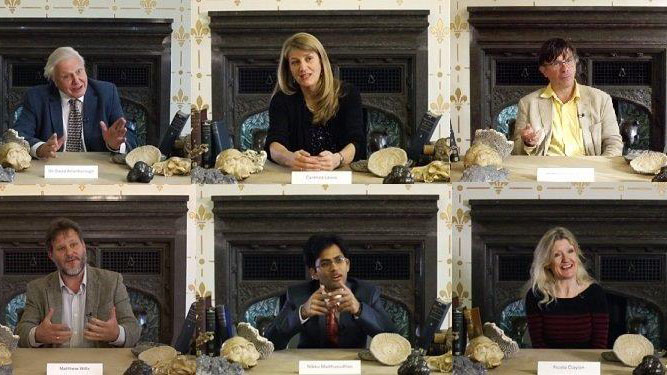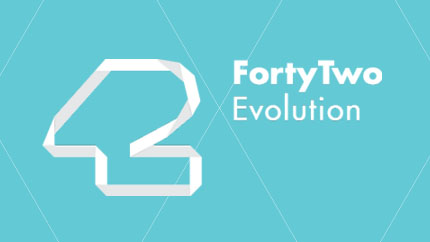Ever wondered if a fly can ride a bicycle, or whether you could survive only on water? A new website on evolution, created by Cambridge scientists and featuring contributions from luminaries including Sir David Attenborough, has some intriguing answers.
Ever wondered if a fly can ride a bicycle, or whether you could survive only on water? A new website on evolution, created by Cambridge scientists and featuring contributions from luminaries including Sir David Attenborough, has some intriguing answers.
Like all the sciences, evolution is constantly, well, evolving. New insights and unexpected discoveries combine with seeing old things in a completely new light. It is active, dynamic, changing and unpredictable. We wanted to create a website that captures the excitement and thrill of that exploration.
Simon Conway-Morris
Are there actually Martians out there? Could life survive in boiling water? And more importantly, what is your dog really thinking?
If these are the sort of questions that keep you awake at night, then help is finally at hand, in the form of a new website created by a team of scientists at Cambridge and featuring contributions from a host of leading academics.
Named Forty Two (after Douglas Adams’ famously cryptic solution to the meaning of life), the site is an online resource dedicated to the subject of evolution, and includes video interviews in which researchers including Sir David Attenborough, Simon Conway Morris, Eugene Koonin, and Carenza Lewis offer their views on topics ranging from the nature of evolution itself, to the future of life as we know it.
Aimed at general readers and, in particular, young people who are just starting to get into science, its aim is to provide an innovative and authoritative source of information about evolution on the web.
Its creators also hope to demonstrate that evolution is a subject that is, in itself, evolving. To prove this, the site uses the study of evolution to attempt to answer a host of knotty problems drawn from the fringes of current scientific understanding – questions such as “Can you have blue blood?”, “Do insects copulate with flowers?” and “Can you see heat?”
The site was created by a team led by Simon Conway Morris, Professor of Evolutionary Palaeobiology and a Fellow of St John’s College at the University of Cambridge. “Evolution is true, and if it didn’t happen, we wouldn’t be here,” he said. “Like all the sciences, evolution is constantly, well, evolving. New insights and unexpected discoveries combine with seeing old things in a completely new light. It is active, dynamic, changing and unpredictable. We wanted to create a website that captures the excitement and thrill of that exploration.”
The site features a unique video archive that collects the thoughts of leading scientists around the world. The most familiar, Sir David Attenborough, is, for example, captured reflecting with troubling pessimism about the future of the planet, in response to the question: “Are you optimistic about the human species?” “The truthful answer is that I am not,” he replies. “It seems to me almost inevitable that things are going to get worse before they get better… and the only way that we can stop that is by reducing carbon emissions very, very quickly indeed.”
Around that archive, the website’s designers have constructed a living database of information about evolutionary studies that illustrates the scope and scale of the scientific discussion that Darwin brought to the fore of public debate more than 150 years ago.
Dr Victoria Ling, from the University’s Department of Earth Sciences, said: “When you type ‘evolution’ into Google you get a lot of information, not all of which is very reliable, but even the sources that are reliable can inadvertently give the impression that evolution was ‘solved’ with Darwin. In fact, evolution remains a vibrant area of research and there’s an awful lot left to learn. We wanted to produce a site which showcases that ongoing discussion, one which has plenty of serious content, but also a strong sense of fun.”
The core material is divided into three main subject areas: “Here And Now”, for topics on which the scientific community has reached a rough consensus; “Near Horizons”, for nagging questions that are hotly debated; and “Far Horizons”, for really big issues that sit at the edge of current knowledge.
Users can also play a careers game that takes a light-hearted look at some of the real tasks real scientists can end up doing in the course of their work. This is personalised to the user’s interests based upon their answers to the questions “What am I into?” “How does my mind work?” and “Where is my focus?”. Historians can meanwhile delve into a selection of potted biographies of scientific pioneers, ranging from familiar figures such as Darwin himself, to lesser-sung heroes and heroines, such as the 19th-century fossil collector Mary Anning, and the American cytogeneticist Barbara McClintock.
Perhaps, however, the site’s most revelatory feature is its selection of Q&A topics so bizarre that they periodically sound more like something out of science fiction, as Douglas Adams himself might have hoped.
Who knew, for example, that rattlesnakes really can “see” heat, in a manner of speaking, thanks to evolved pits close to the front of their faces that relay information about thermal contrasts to the same part of the brain that registers information from the eyes? Or that dogs, which have evolved alertness to human gestures but appear to lack self-awareness may simply be part of a greater consciousness that we ourselves have yet to fathom?
As for the Martians, the answer remains similarly unclear, but Conway-Morris suggests that we might be looking at the wrong planet for alien life. One theory has it that Venus could technically be inhabited by aerial microbes – something equivalent to the extremophiles found on Earth – ekeing out their existence amid the sulphuric clouds shrouding the planet.
“Even today maybe Venusian aerial life wafts its way across the 25 million miles or so of space that separate us,” Conway Morris writes. “Unlikely? Most certainly. Impossible? Perhaps not.”
For more, visit: http://www.42evolution.org/
Additional images taken from www.42evolution.org.

The text in this work is licensed under a Creative Commons Attribution 4.0 International License. For image use please see separate credits above.






